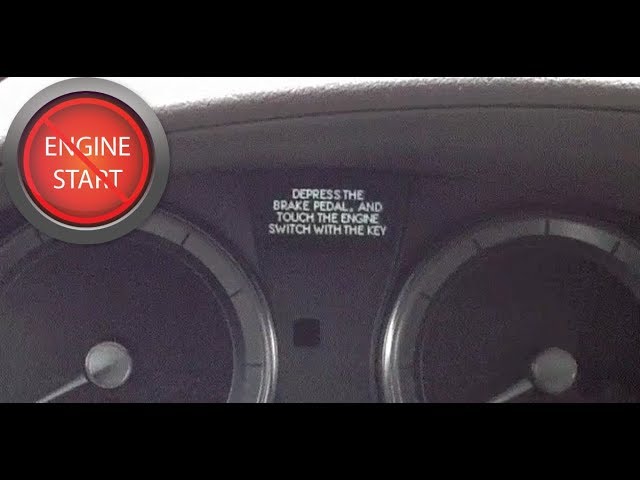Welcome to our guide!
We’re here to help you understand the difference between 153 and 168 Tooth flywheels, making it easier to choose the right one for your vehicle.
Your car’s flywheel is a significant part of its internal machinery.
It plays a crucial role in maintaining balance and ensuring smooth engine performance.
Surprisingly, not many people know much about flywheels and how they work.
So, do you know which one you need – 153 Tooth or 168 Tooth?
We’re breaking down the basics, explaining how flywheels function and why they’re vital for your car’s performance.
By the end of this guide, you’ll be able to recognize the distinctions between the two flywheels and confidently pick the one that suits your car.
Stick with us, and let’s simplify the decision-making process!
What exactly is a flywheel?

A flywheel, commonly crafted from cast iron, is a metal disc linked to one end of the crankshaft. Its role is to induce wheel rotation by engaging clutch discs. Cars employing manual transmissions typically incorporate a flywheel, while automatic transmissions utilize Flexiplates with a comparable function.
The flywheel needs to be durable since its teeth remain in constant contact with clutch discs, undergoing wear and tear. To address this, certain premium manufacturers now opt for carbon fiber flywheels, renowned as the toughest material known to humans.
Also Read: Why Is Oil Pressure Engine Off VW? Causes & Solutions
Now, let’s delve into the key functions of the flywheel:
1: Effortless Engine Start
Contrary to common knowledge, the flywheel plays a pivotal role in initiating the engine, not just in propelling the wheels. It takes the form of a thick disc with gear teeth on its periphery. These teeth facilitate a connection with smaller gears attached to the starter motor, known as the Bendix gear.
Upon inserting the key, the Bendix gear and the flywheel engage, setting the gears in motion and initiating the flywheel and crankshaft. Once the compression is established, and the engine is running, the two disengage, allowing the flywheel to rotate freely.
The quality of the flywheel significantly impacts the speed and smoothness of the engine start. If you find yourself needing to turn the key multiple times for the engine to start, it might be due to a faulty flywheel with worn-out teeth edges.
2: Enhancing Drive Stability
The weight of the flywheel in your car is contingent on the crankshaft, and it plays a crucial role in optimizing engine cycles for a smoother driving experience. As the engine operates, the piston’s lateral movement generates significant vibrations, which, if unchecked, can disrupt the car’s balance.
By linking to the crankshaft, the flywheel mitigates unstable motion and dampens vibrations. If you sense unusual vibrations, especially at higher speeds, it’s advisable to have the flywheel inspected promptly.
3: Seamless Engine Revolution
Car engines operate as either 2-stroke or 4-stroke engines, producing power through two or four piston movements from one end to another. This inherently results in jerky motions. But why doesn’t the car feel this, and what sustains its movement between these piston firings?
The flywheel plays a crucial role in converting these piston revolutions into a continuous, smooth movement by contributing mass to preserve rotational inertia. Additionally, it aids the crankshaft in maintaining a consistent speed and motion, ensuring an overall smooth operation of the engine.
What Are the Key Difference Between 153 And 168 Tooth Flywheel?
While specific differences between 153-tooth and 168-tooth flywheels can vary depending on the context (such as in the context of automotive applications), here are seven potential differences that could be relevant:
Size and Tooth Count
- 153-Tooth Flywheel: Typically smaller with 153 teeth around its circumference.
- 168-Tooth Flywheel: Generally larger, featuring 168 teeth.
Starter Motor Compatibility
- 153-Tooth Flywheel: May require a starter motor with a matching gear ratio.
- 168-Tooth Flywheel: Similarly, may necessitate a specific starter motor with a corresponding gear ratio.
Engine Compatibility
- 153-Tooth Flywheel: Often used in specific engine configurations or applications.
- 168-Tooth Flywheel: Commonly associated with different engines or vehicle types.
Weight and Inertia
- 153-Tooth Flywheel: Tends to be lighter, impacting the engine’s rotational inertia.
- 168-Tooth Flywheel: Generally heavier, affecting the engine’s rotational characteristics.
Crankshaft Engagement
- 153-Tooth Flywheel: Engages with the crankshaft in a manner specific to its tooth count.
- 168-Tooth Flywheel: Interacts with the crankshaft in a way corresponding to its tooth count.
Performance Characteristics
- 153-Tooth Flywheel: May influence the engine’s responsiveness and acceleration.
- 168-Tooth Flywheel: Might have distinct effects on the engine’s torque and overall performance.
Application Specifics
- 153-Tooth Flywheel: Found in certain vehicle models or applications.
- 168-Tooth Flywheel: Commonly associated with different vehicle types or engine setups.
It’s important to note that these differences may impact the compatibility, performance, and characteristics of the flywheel in a given automotive system. Specifics can vary, so it’s advisable to refer to the manufacturer’s recommendations and specifications for accurate information.
FAQs – Difference Between 153 and 168 Tooth Flywheel
What size is a 168 tooth flywheel?
A 168-tooth flywheel typically has a larger diameter compared to its 153-tooth counterpart. The specific size can vary among manufacturers, but it generally represents a bigger flywheel with 168 teeth around its circumference.
What is the diameter of a 153 tooth flywheel?
The diameter of a 153-tooth flywheel varies, but it is generally smaller compared to a 168-tooth flywheel. This configuration usually features 153 teeth distributed around its perimeter, contributing to its distinct size.
How many teeth does a flywheel have?
The number of teeth on a flywheel depends on its specific type and application. Flywheels can range from around 153 teeth to 168 teeth, with tooth count impacting various engine and performance characteristics.
How many teeth does a 327 flywheel have?
The number of teeth on a flywheel for a 327 engine can vary, but it typically aligns with the specific tooth count common for the given engine model, ranging from around 153 to 168 teeth.
How do I know what size flywheel I need?
Determining the appropriate flywheel size involves considering factors like engine type, vehicle model, and transmission. Consult the vehicle’s specifications or seek advice from a qualified mechanic to ensure compatibility.
What does a heavier flywheel do?
A heavier flywheel enhances rotational inertia, promoting smoother engine operation. It helps stabilize engine cycles, providing benefits such as improved idle stability and enhanced torque delivery.
Does flywheel size matter?
Yes, flywheel size matters as it influences the engine’s characteristics. Smaller flywheels may enhance responsiveness, while larger ones contribute to smoother operation and torque delivery.
Which flywheel is bigger?
Generally, a 168-tooth flywheel is larger compared to a 153-tooth flywheel. The difference in size is due to the additional teeth on the circumference of the flywheel.
How many teeth does an ls7 flywheel have?
An LS7 flywheel typically has a tooth count specific to its design, falling within the range commonly associated with the LS7 engine, such as around 168 teeth.
How do you calculate flywheel?
Calculating the appropriate flywheel involves considering factors like engine size, vehicle weight, and desired performance characteristics. Consult manufacturer guidelines or seek professional advice for accurate calculations.
What is the diameter of a 153 tooth flexplate?
The diameter of a 153-tooth flexplate varies but is generally smaller compared to a 168-tooth flexplate. The 153-tooth configuration features 153 teeth arranged around its perimeter, impacting its overall size.
Why is a flywheel toothed?
The toothed design on a flywheel facilitates engagement with other components, such as the starter motor and clutch assembly, allowing for the transfer of rotational energy and contributing to the engine’s smooth operation.
Will a 153 tooth flywheel work with a 168 tooth starter?
It’s generally not recommended to pair a 153-tooth flywheel with a 168-tooth starter or vice versa, as the tooth counts must match for proper engagement and optimal performance.
What is a standard flywheel?
A standard flywheel refers to a common configuration with a typical tooth count, often ranging from around 153 to 168 teeth, depending on the engine and application.
How many teeth does a GM flywheel have?
The tooth count on a GM flywheel can vary based on the specific engine and model, falling within the common range of around 153 to 168 teeth. Check the vehicle’s specifications for accurate tooth count information.
Conclusion – Difference Between 153 and 168 Tooth Flywheel
In wrapping up, understanding the nuances between 153 and 168 Tooth flywheels proves vital for conscientious vehicle owners.
The choice between these two sizes transcends mere mechanical specifics, impacting engine performance and overall driving experience.
From the fundamental functions of initiating the engine to fostering balance and stability, the flywheel’s significance cannot be overstated.
Its size, weight, and tooth count influence not only the starting mechanism but also the very essence of a car’s smooth operation.
Consideration of these distinctions becomes imperative when seeking optimal performance and longevity.
The tailored selection of a flywheel aligns with the intricacies of diverse engines and vehicle models.
Recognizing the symbiotic relationship between the flywheel and the broader automotive system empowers individuals to make informed decisions, ensuring their vehicles operate seamlessly.
In the realm of vehicle maintenance, this knowledge becomes a compass, guiding enthusiasts towards an enhanced driving experience and prolonged engine life.




